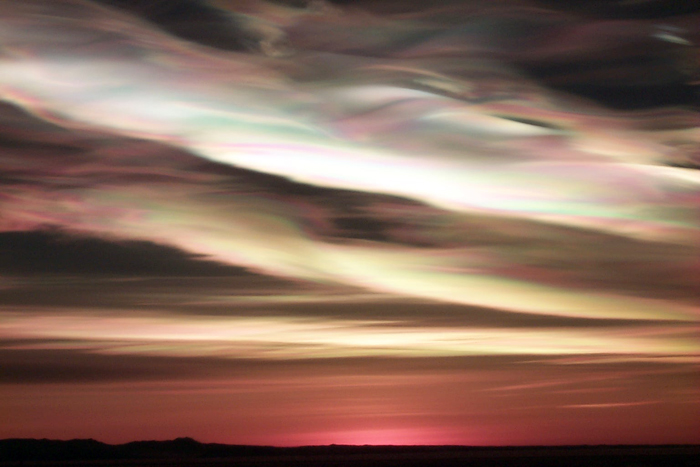|
Working with the FrenchMilne said the NSF is planning a large, balloon-based field campaign during the 2009-10 field season between U.S. researchers and scientists from the French space agency Centre National D’Etudes Spatiales (CNES) “This project will utilize the long-duration balloons designed and flown by [the French Space Agency] in 2005 over Antarctica,” Mercer said. The 2005 project, an international program called Vorcore In 2009, Deshler’s group will fly instruments on four of the French super-pressure balloons, which can remain in the same air mass for the duration of their flight, which may last up to three months. “The idea here is to measure PSCs from a platform drifting with the air currents,” Deshler said. “We are interested in capturing the initial particle development as the air cools to PSC temperatures, and to measure the rate at which solid PSC particles are nucleated in these cases. We can then also capture the evolution of the particles as they evaporate when temperatures warm.” In particular, the team wants to learn more about the formation of nitric acid tri-hydrate (NATs), one of three particles that make up PSCs. The various PSC particles nucleate at slightly different temperatures, so knowing the conditions under which the NATs appear could help with ozone depletion forecasting around the world. “[Two degrees Kelvin] can become the difference between having no ozone depletion and having significant ozone depletion, because that’s the difference of having no clouds and some clouds,” Deshler said. Much work still to doEstimates for “recovery” of the ozone hole range from 2040 to 2080, with the National Oceanic and Atmospheric Administration Deshler cautioned that while the world has phased out CFCs, one of its primary substitutes, hydrochlorofluorocarbons (HCFCs), while less severe than CFCs, still deplete ozone. Countries like China and India, for instance, may continue to increase global concentrations of ozone-depleting substances just by their sheer volume of population and production. “I think it’s still important to keep the world’s attention, at least partially focused, on the ozone loss story, because it isn’t over yet,” Deshler said. “We need to maintain those controls, and we need to seek even further substitutes. This is particularly true in the developing world.” NSF-funded research in this story: Terry Deshler and Jennifer Mercer, University of Wyoming, Award No. 063694 |
"News about the USAP, the Ice, and the People"



For USAP Participants |
For The Public |
For Researchers and EducatorsContact UsU.S. National Science FoundationOffice of Polar Programs Geosciences Directorate 2415 Eisenhower Avenue, Suite W7100 Alexandria, VA 22314 Sign up for the NSF Office of Polar Programs newsletter and events. Feedback Form |



